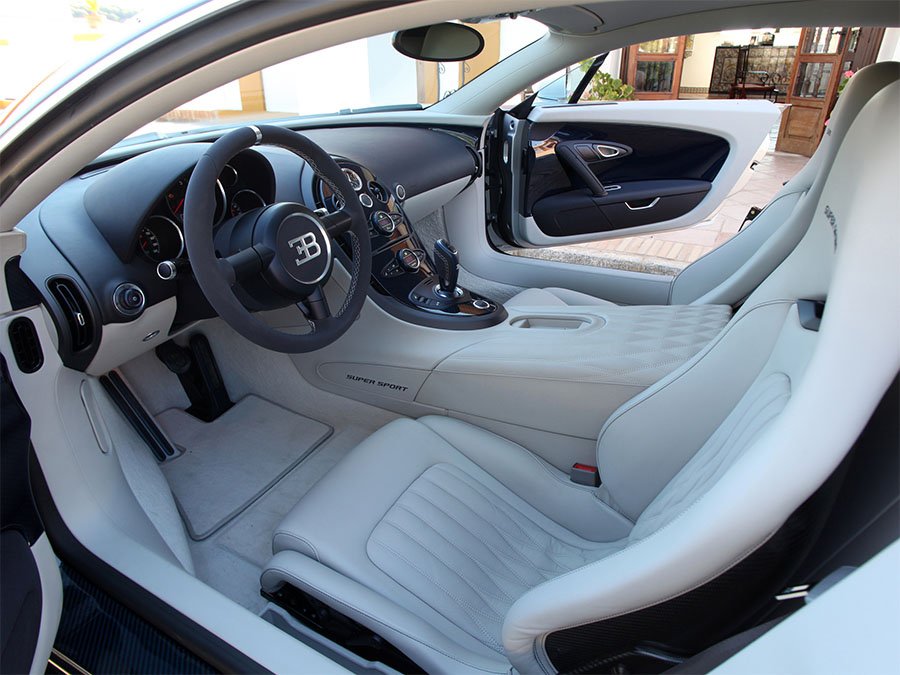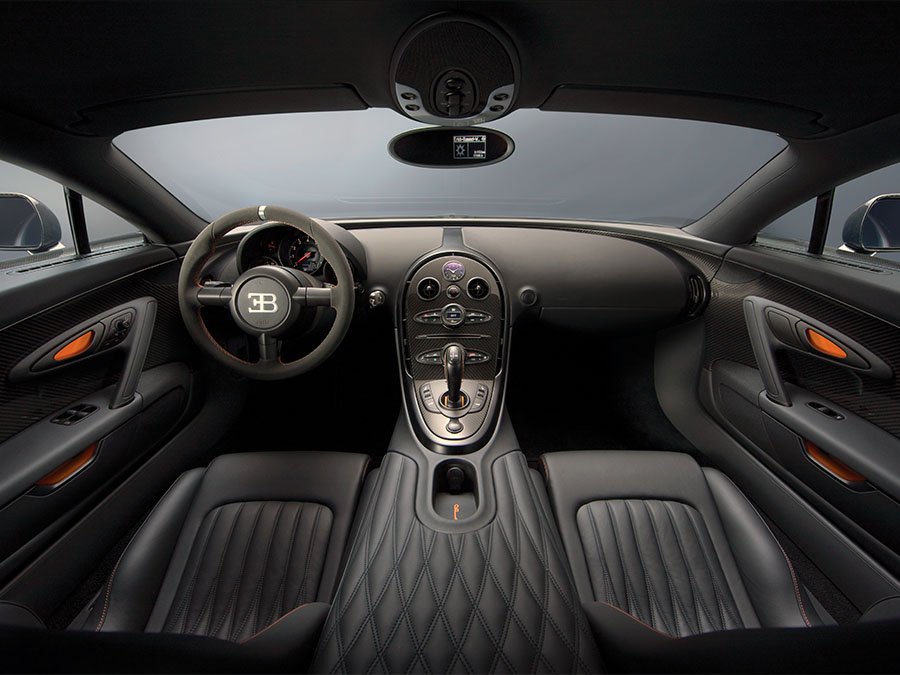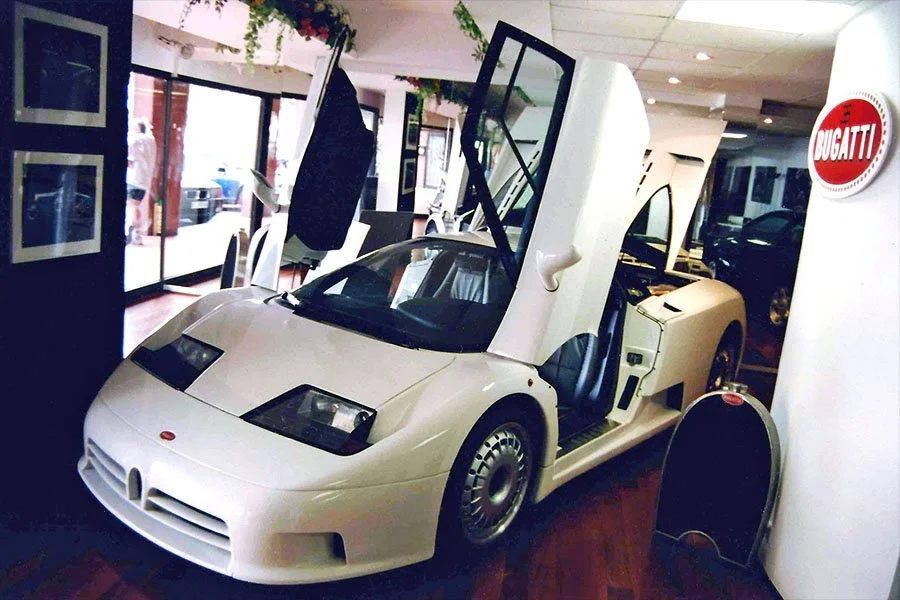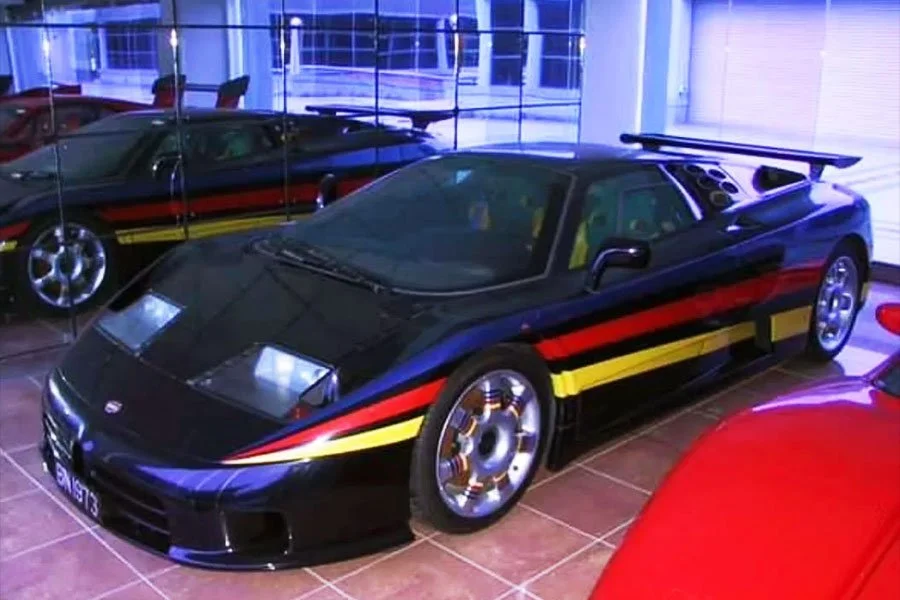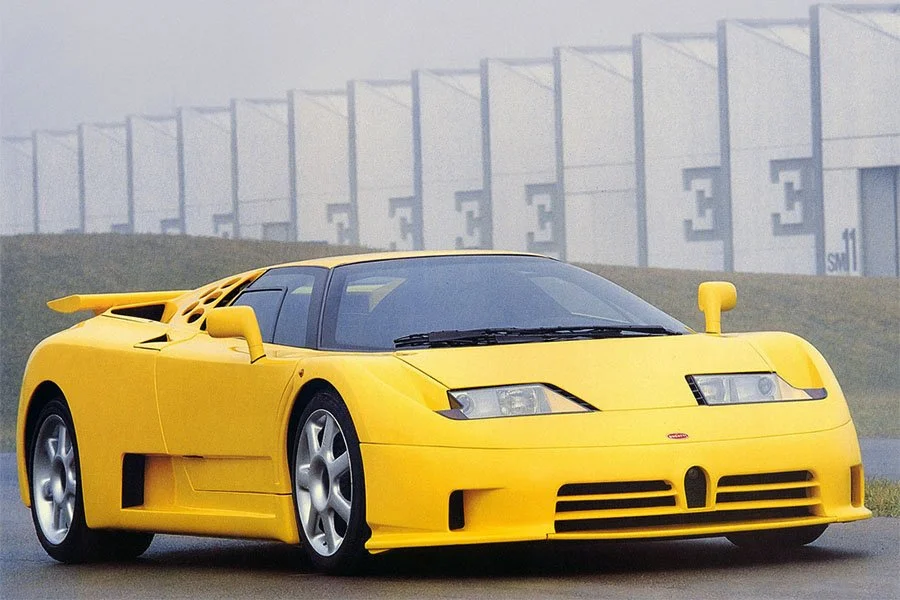Guide: Bugatti 16.4 Veyron Super Sport - a Historical & Technical Appraisal
/BACKGROUND
Five years after the production-ready Veyron was presented, Bugatti revealed the ultimate iteration of their record-breaking supercar in the shape of a limited production run-out model designed to push the original concept to its limit.
Presented at the annual Monterey festivities in August 2010 (The Quail, the Laguna Seca historic races and the Pebble Beach Concours d’Elegance), a proper public motor show debut for the appropriately titled Veyron Super Sport then followed at the Paris Salon in September.
Bugatti first adopted the Super Sport moniker in 1931 for the supercharged 2.3-litre straight eight-powered Type 55. Unveiled at the 1931 Paris Salon, the Type 55 was based on Bugatti’s Type 51 Grand Prix car of the era, but its uncompromising nature resulted in limited demand and only 38 of these spectacular machines were ultimately built. Famously, it was the Type 55’s two-tone colour scheme that inspired the bi-colour paint option for the Veyron.
In more recent times, the ill-fated EB110 of the Romano Artioli era was also offered in uprated Super Sport trim, but as a consequence of poor trading conditions it proved even less popular than the Type 55. Having been unveiled at the Geneva Motor Show in 1992, only 32 examples of the EB110 Super Sport were built after the initial batch of prototypes.
In a similar fashion to these previous SS-badged Bugattis, the new Veyron-based Super Sport was the result of continuous development of the Veyron concept and thus considerably enhanced over the base model. Although a limited batch of just 30 cars was initially announced, the tub, suspension, wheels, engine, gearbox and aero kit all came in for considerable attention which explained the substantial premium these cars retailed at compared to a standard Veyron.
Production began during the autumn of 2010 and by May 2011 the entire run been sold.
CHASSIS
To reduce weight and increase torsional rigidity, the Super Sport’s carbonfibre monocoque adopted a new weave that made it 10% stiffer and 25kg lighter. Reinforced A-pillars from the open top Grand Sport were also employed.
To reduce plumbing hardware, the rear-differential cooler was relocated from the passenger-side gill to the rear diffuser.
A 2710mm wheelbase was identical to every Veyron iteration.
Suspension-wise, Bugatti used more progressive spring and damper rates along with thicker anti-roll bars.
As normal, double wishbones with coil sprung hydro-electronic three-stage dampers were fitted; the active ride height was adjusted between Standard, Handling and Top Speed mode (covered later).
SGL Carbon cross-drilled and radially-vented carbonfibre reinforced silicon carbide composite discs were imported from the standard Veyron as were the AP Racing aluminium monobloc calipers with their titanium pistons.
The front axle employed 400mm brake discs, eight piston calipers and four brake pads. At the back, 380mm discs were installed with six-piston calipers and two pads per side.
ABS and emergency Brake Assist were fitted as standard.
Instead of the standard Veyron wheels, the Super Sport came with custom rims that shaved a combined 11.5kg from the car’s weight. Supplied by OZ Racing, they retained the same 10 x 20-inch front and 14 x 20-inch dimensions as the regular Veyron, but now featured a handsome five-twin spoke design with a diamond cut face and coloured inlays.
Giant Michelin run-flat tyres were fitted (P265/680ZR-500A up front and 365/710ZR-540A at the rear) along with a continuous pressure monitoring system.
A variable assistance power-steering system was lifted from the base Veyron along with that car’s 100-litre fuel tank located in a cavity at the back of the monocoque. However, fuel pressure was increased and the Super Sport came with four instead of two in-tank fuel pumps.
ENGINE / TRANSMISSION
To squeeze some extra juice out the Veyron’s spectacular W16 engine, Bugatti fitted bigger turbos and intercoolers along with a less restrictive dual instead of single-exit thin-wall exhaust.
As a consequence of these updates, peak output was 1183.5bhp at 6400rpm and 1106lb-ft at 3000-5000rpm.
For comparison, the standard Veyron motor pumped out 987bhp at 6000rpm and 922lb-ft at 2200-5500rpm.
The rest of the W16 engine’s specification was left alone.
Essentially a pair of slender four-litre V8s that shared the same crankshaft, the mid longitudinally-mounted, all-alloy unit featured dry-sump lubrication, dual overhead camshafts and four valves per cylinder.
It displaced 7993cc thanks to an 86mm bore and stroke and was cooled by nine radiators: three air-to-liquid intercoolers, three engine radiators and one each for the transmission oil, differential oil and engine oil. A tenth radiator served the air-conditioning system.
Compression was set at 9.0:1 and engine management was courtesy of Bugatti’s own system developed in-house.
The Super Sport’s Ricardo-supplied seven-speed direct-shift dual-clutch gearbox drove beefier prop shafts through a reinforced second and third gear and a taller seventh gear but was otherwise unchanged.
Gears were shifted either by F1-style paddles behind the steering wheel or a fully automated system. The dual-clutch set-up meant there was very little interruption in power flow. Gear shifts took just 150 milliseconds.
Transmission was via an electronically-controlled permanent four-wheel drive system that distributed the torque through a front differential with Haldex coupling and a regulated limited-slip differential at the rear. In normal conditions, 30% of the power was sent to the front wheels and 70% to the rear. However, up to 100% could be sent to either axle if required.
Like the standard Veyron, the Super Sport also came with an ASR traction control system, ESP electronic stability control and a launch control facility. The launch control was employed by pressing a button on the centre console, applying the footbrake, flooring the throttle and then quickly releasing the footbrake.
BODYWORK
In the interest of aerodynamic efficiency, Bugatti refined the original Hartmut Warkuss-designed Veyron with a number of subtle new features.
A revised front apron assembly featured bigger single-blade main intakes underneath which was a shallow full width duct that elegantly wrapped around the sides to the wheelarches. More powerful headlights from the open-top Veyron Grand Sport were fitted above new cooling slots that fed fresh air to the brakes.
Above the engine, the original Veyron’s short roof and distinctive pair of snorkel intakes were deleted in favour of a tunnelled long-roof configuration with two NACA ducts that not only reduced drag but also helped increase power by virtue of the greater ram effect generated.
At the back, Bugatti modified the central fascia panel with straight instead of downward curving corners to open up the meshed cooling vents. As per the front of the car, there was also a new apron with an F1-style double diffuser and the aforementioned dual outlet exhaust system.
Polished aluminium strips ran from the base of the A-pillar to the back of the car and were adjoined underneath an enlarged licence plate plinth.
The Super Sport’s active rear spoiler was reprogrammed to deploy into the airflow at 122mph as opposed to 137mph.
Whereas the standard Veyron’s body panels were fashioned from a mixture of carbonfibre and aluminium, the Super Sport’s outer panels were manufactured exclusively from carbonfibre.
INTERIOR
Aside from Super Sport scrip embossed onto the headrests and sidewalls of the transmission tunnel, a re-calibrated engine output gauge that now read to 1200 PS, exposed carbonfibre primary door panels and an alcantara steering wheel rim with coloured 12 o’clock marker, the Super Sport was much the same as any other Veyron inside.
Behind the three-spoke steering wheel with its magnesium alloy paddle shifters and control stalks was a curved binnacle with five analogue instruments. In the centre was a large 8000rpm tachometer. To the left was the recalibrated medium-size engine output gauge. Above this was a small oil temperature read out. To the right of the rev counter was a mid-size 280mph / 430kmh speedometer with a small fuel gauge above. The three larger gauges also housed digital read outs and an array of warning lights.
The sloping body matched centre console was home to an analogue clock, two fresh air vents, a hazard warning light switch, a Burmester audio system, the climate controls and the gear lever. Alongside the gear lever were switches for the heated seats, launch control, Handling Mode activation and engine starting.
OPTIONS
Because of its all carbonfibre outer panels, Bugatti offered the Super Sport with a new fully lacquered exposed carbonfibre finish although at a 20% premium over list price it was probably the most expensive optional extra of all time.
Buyers could also now request a gas cap personalised with their own initials (instead of the Ettore Bugatti logo).
Other cost upgrades included World Record Edition wheels, quilted leather for the seat inserts and transmission tunnel, contrast stitching, brake calipers in a choice of colours, Pierre Veyron or Ettore Bugatti signature script and customised door sill plates.
WEIGHT / PERFORMANCE
At 1838kg the Super Sport weighed in at 50kg less than a standard Veyron.
While the new car’s 0-62mph time was officially unchanged at 2.5 seconds, the 0-125mph time was cut from 7.3 to 6.7 seconds and the 0-186mph time dropped from 16.7 to 14.6 seconds.
On July 3rd 2010 (a few weeks prior to launch), Bugatti’s official test driver, Pierre Henri Raphanel, drove the Super Sport to a new land speed record for production cars when he hit 431.072kmh (268mph) at the Volkswagen Group’s Ehra-Lessien test track in Germany.
However, production variants were limited to 415kmh (258mph) to protect their tyres.
WORLD RECORD EDITION
To celebrate regaining the achievement at Ehra-Lessien, the first five Veyron Super Sports to emerge from Molsheim were a special series with the same configuration as the land speed record car.
Dubbed the World Record Edition, each was finished in exposed carbonfibre with orange accents and matching orange World Record Edition wheels.
Inside, all five came with quilted leather for the seat inserts and transmission tunnel, orange stitching, orange door handle and storage bin inserts and orange Super Sport script on the headrests and transmission tunnel sidewalls.
All five cars were pre-sold before production got underway.
END OF PRODUCTION
Although Bugatti originally planned to created just 30 examples of the Veyron Super Sport, 48 were ultimately completed between 2010 and 2012.
In addition, an open Grand Sport Vitesse (effectively an open version of the Super Sport) was introduced at the Geneva Motor Show in March 2012 (covered separately).
Text copyright: Supercar Nostalgia
Photo copyright: Bugatti - https://www.bugatti.com








